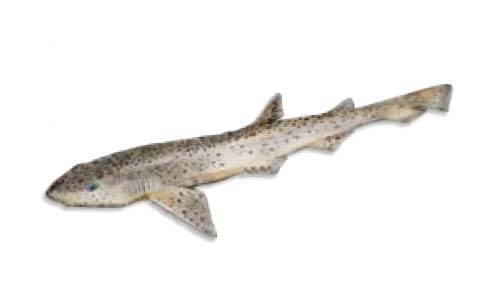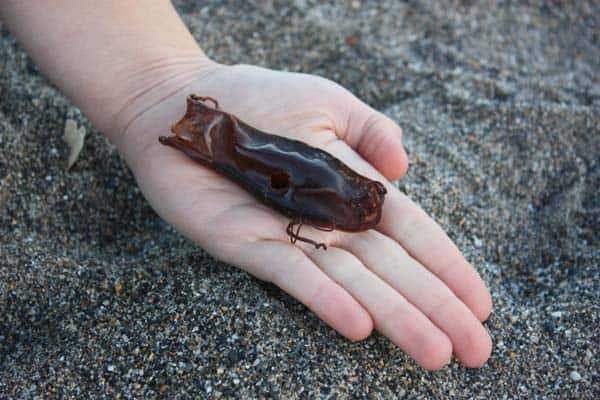
Bull Huss, Scyliorhinus stellaris. Artwork: Sinead Begley
Fast Facts
Scientific Name: Scyliorhinus stellaris
Gaelic Name: Madadh mor, fallach.
Other Names: Nursehound, Rock Salmon, Greater Spotted Dogfish.
Conservation status: Listed by the World Conservation Union (IUCN) as Near Threatened globally.
Range: Throughout the north east Atlantic, from Norway south to West Africa. Also present in the Mediterranean.
Habitat: Found over rough or rocky ground in depths ranging from 1 to 400m.
Lifespan: At least 19 years.
Reproduction: Females lay single eggs in spring and summer and the young hatch out of their eggcases after about 9 months.
Diet: Crustaceans, molluscs and fish, including small sharks.
Predators: Seals, humans.
Although almost identical in shape and form, Bull Huss eggcases are much larger than Small Spotted Catshark purses.

This eggcase is tubular with curly tendrils at either end. It is quite large, about as long as an adult’s middle finger.
If you find one of these eggcases on the beach, please do report it to your local shark and ray sightings scheme.